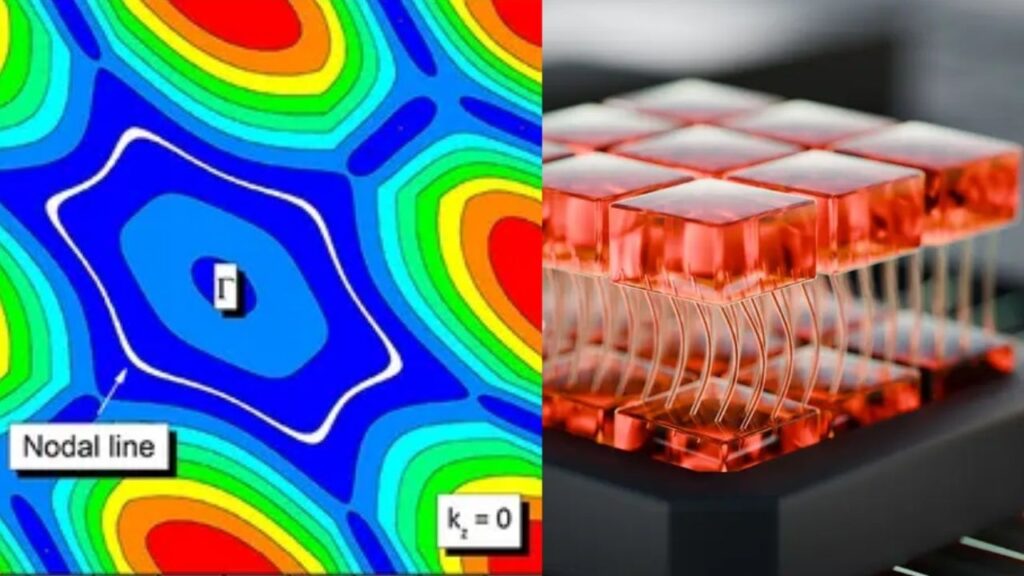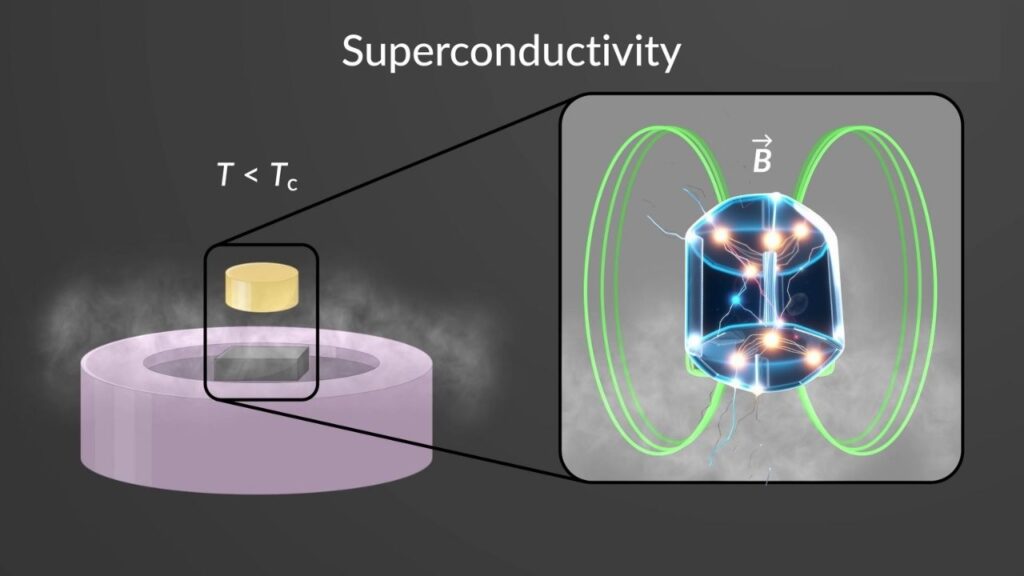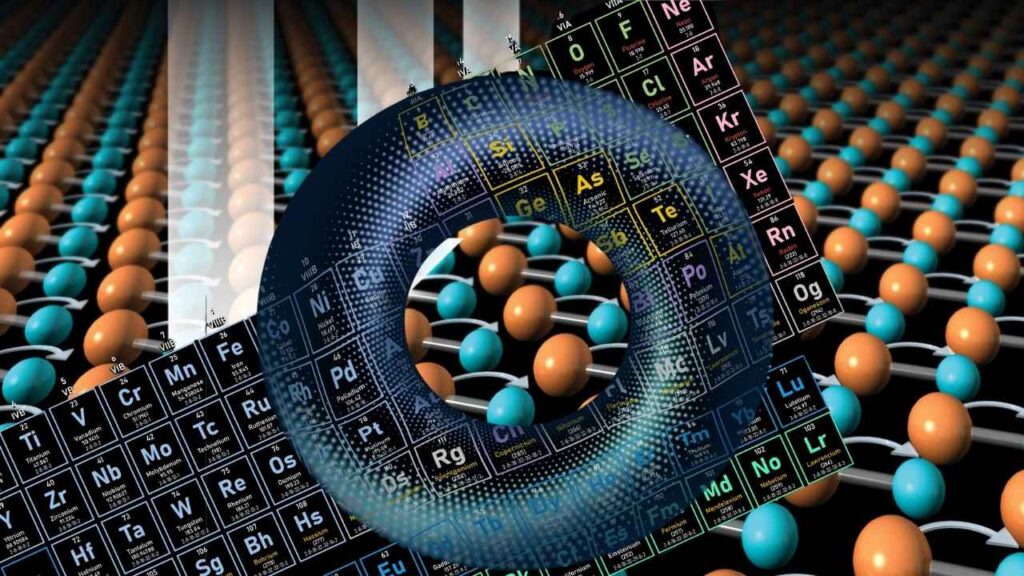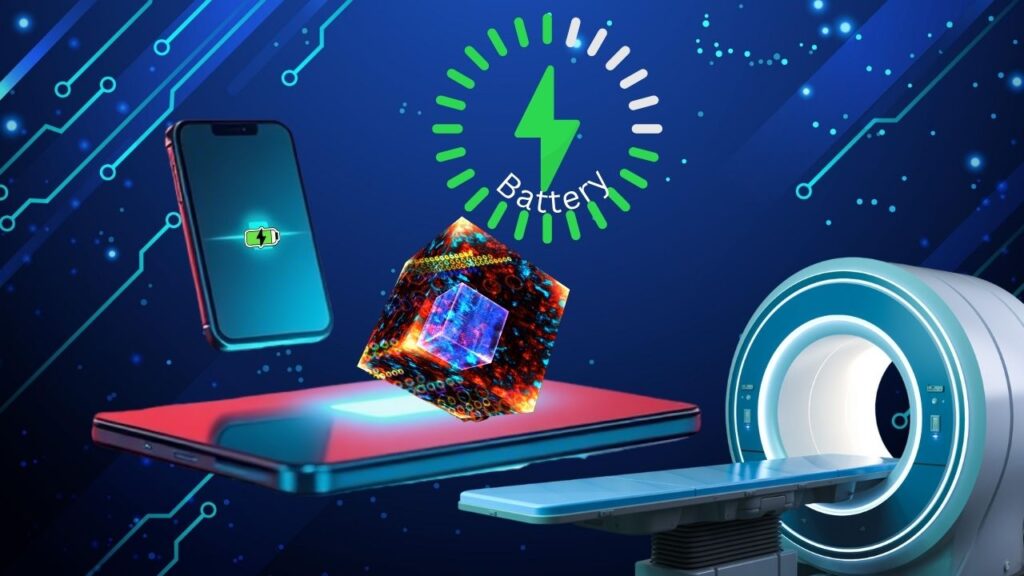New Super Material Could Lead to More Powerful, Energy-Saving Electronics: The world of electronics is on the verge of a transformation, thanks to the recent discovery of a new super material called a Kramers nodal line metal. Developed by a team of researchers, this material has the potential to make our electronic devices not only more powerful but also far more energy-efficient.

In this comprehensive article, we’ll break down what makes this material so special, how it was discovered, and what it means for both everyday users and professionals. All information is based on verified research and expert consensus, ensuring accuracy and clarity.
Table of Contents
New Super Material Could Lead to More Powerful, Energy-Saving Electronics
| Feature/Fact | Details & Data |
|---|---|
| Material Name | Kramers nodal line metal |
| Discovery Team | Rice University, led by Ming Yi and Emilia Morosan |
| Year of Discovery | 2025 |
| Key Components | Tantalum, sulfur, and a small amount of indium |
| Main Properties | Superconductivity (no energy loss), unique electron spin pathways, tunable topological traits |
| Potential Applications | Energy-efficient electronics, quantum computing, sustainable power systems |
| Experimental Techniques Used | Spin-resolved angle-resolved photoemission spectroscopy, electrical transport in magnetic fields |
| Published In | Nature Communications |
| Official Resource | Rice University News |
The discovery of the Kramers nodal line metal is a landmark achievement in the quest for more powerful, energy-saving electronics. By combining superconductivity with topological protection, this new super material offers a glimpse into a future where our devices are faster, more efficient, and more sustainable. While challenges remain, ongoing research and collaboration are paving the way toward practical applications that could transform industries and improve everyday life.
Understanding the Discovery: What Is a Kramers Nodal Line Metal?
A Kramers nodal line metal is a new class of quantum material that combines the rare properties of superconductivity and topological protection. Let’s break down these terms for clarity:
What Is Superconductivity?

Superconductivity is a phenomenon where a material can conduct electricity with absolutely zero resistance. In regular conductors like copper, some energy is always lost as heat due to resistance, but in a superconductor, electrons move effortlessly. This property is already used in some specialized technologies, but most superconductors require extremely low temperatures, making them impractical for everyday electronics.
What Are Topological Materials?

Topological materials have electronic properties that are protected by the symmetry of their atomic structure. This makes them robust against disturbances like impurities or defects. In a Kramers nodal line metal, electrons with opposite spins travel along different paths, only merging at specific lines in the material’s structure—these are the “Kramers nodal lines.”
How Was This Material Created?
The research team engineered this material by introducing a small amount of indium into a layered compound of tantalum and sulfur (TaS₂). This subtle change in the atomic recipe altered the symmetry of the crystal, giving rise to new and desirable electronic behaviors.
The Science Behind the Super Material
How Did Scientists Discover and Verify the Material?
The research team used a combination of experimental and theoretical techniques:
- Spin-resolved angle-resolved photoemission spectroscopy (ARPES): This advanced tool allows scientists to observe how electrons move and spin inside a material.
- Electrical transport measurements: By applying magnetic fields and measuring how electricity flows, researchers could confirm the presence of superconductivity and unique electron pathways.
- First-principles theoretical calculations: These are sophisticated computer simulations based on fundamental physics, used to predict and confirm the material’s properties.
What Makes This Material Unique?
- Symmetry-Protected Electron Paths: The electrons’ spins are separated into different “lanes” by the material’s symmetry, making their paths robust and reliable.
- Tunability: By adjusting the amount of indium, researchers can fine-tune the material’s properties for specific applications.
- Potential for Room-Temperature Superconductivity: While most superconductors work only at extremely low temperatures, the unique structure of this material could pave the way for higher-temperature superconductors in the future.
Why Is This Discovery Important for Electronics?
The Challenge with Today’s Electronics
Modern electronics, from smartphones to data centers, waste a significant portion of energy as heat due to resistance in their circuits. Data centers alone consume a substantial amount of the world’s electricity, much of which is lost as heat.
How Could Kramers Nodal Line Metals Change This?
- Energy Savings: Devices built with this material could operate with minimal energy loss, extending battery life and reducing electricity bills.
- Greater Processing Power: Superconducting and topological materials can support faster, more efficient data processing, which is essential for applications like artificial intelligence and big data.
- Sustainability: Reducing energy waste in electronics supports global efforts to lower carbon emissions and combat climate change.
Real-World Applications: From Smartphones to Quantum Computers

1. Consumer Electronics
Imagine a smartphone that needs charging only once a week, or a laptop that runs for days without plugging in. By minimizing energy loss, this new material could make such devices a reality.
2. Quantum Computing
Quantum computers rely on materials that can maintain quantum states without interference. The unique electron pathways in Kramers nodal line metals are ideal for building stable, error-resistant quantum bits (qubits). Quantum computing could revolutionize fields from cryptography to drug discovery.
3. Power Grids and Renewable Energy
Superconducting materials can transmit electricity over long distances with virtually no loss, making power grids more efficient and reliable. This is especially important for integrating renewable energy sources like solar and wind, which require efficient transmission to balance supply and demand.
4. Medical Technology
MRI machines and other medical imaging devices rely on superconducting magnets. More efficient, higher-temperature superconductors could make these machines more affordable and accessible worldwide.
5. Transportation
Electric vehicles (EVs) could benefit from lighter, more efficient power systems, extending their range and reducing charging times. High-speed trains could also use superconducting magnets for faster, smoother rides.
What Does the Future Hold?
Challenges to Overcome
- Scalability: Producing these materials in large quantities at a reasonable cost is still a challenge.
- Integration: Adapting existing electronic designs to use new materials requires significant research and development.
- Temperature Limitations: While this discovery is a step toward higher-temperature superconductors, further advances are needed before room-temperature operation is possible.
Ongoing Research
The research team and collaborators worldwide are continuing to study the properties of Kramers nodal line metals, searching for ways to improve their performance and bring them closer to practical use. Funding for this research comes from major scientific agencies committed to advancing materials science.
New Materials Support Progress Toward More Reliable Quantum Computers
Software Detects Glass Walls With 96% Accuracy Without Using Costly Sensors
FAQs About New Super Material
What is a super material?
A super material is a substance with extraordinary properties, such as the ability to conduct electricity without resistance or withstand extreme conditions. Examples include graphene, carbon nanotubes, and now, Kramers nodal line metals.
What does superconductivity mean?
Superconductivity is when a material can carry electricity with zero resistance, meaning no energy is lost as heat. This property is highly sought after for making energy-efficient devices.
What are Kramers nodal lines?
Kramers nodal lines are special paths in a material where electrons with opposite spins merge. These paths are protected by the material’s symmetry, leading to unique electronic behaviors.
How soon will this technology be available in consumer products?
While the discovery is promising, it may take several years of further research and development before products using this material reach the market.
Where can I learn more about this discovery?
You can follow updates from leading universities and scientific journals for the latest developments in quantum materials and electronics.
Practical Advice for Professionals and Students
For Engineers and Scientists
- Stay Updated: Follow peer-reviewed journals and attend conferences on quantum materials.
- Collaborate Across Disciplines: This field combines physics, materials science, and engineering. Cross-disciplinary collaboration will be key to future breakthroughs.
- Invest in Skills: Understanding quantum mechanics, solid-state physics, and advanced materials will be highly valuable.
For Students
- Explore STEM Fields: Consider studying physics, chemistry, or engineering to be part of the next wave of technological innovation.
- Participate in Research: Look for internships or research programs at universities working on quantum materials.
- Stay Curious: The world of science is always evolving—keep asking questions and seeking out new knowledge.



















